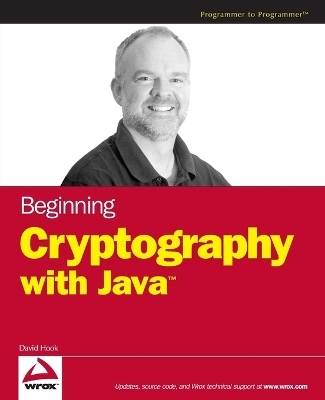
Beginning Cryptography with Java
Wrox Press (Verlag)
978-0-7645-9633-9 (ISBN)
Beginning Cryptography with Java While cryptography can still be a controversial topic in the programming community, Java has weathered that storm and provides a rich set of APIs that allow you, the developer, to effectively include cryptography in applications-if you know how.
This book teaches you how. Chapters one through five cover the architecture of the JCE and JCA, symmetric and asymmetric key encryption in Java, message authentication codes, and how to create Java implementations with the API provided by the Bouncy Castle ASN.1 packages, all with plenty of examples. Building on that foundation, the second half of the book takes you into higher-level topics, enabling you to create and implement secure Java applications and make use of standard protocols such as CMS, SSL, and S/MIME.
What you will learn from this book
How to understand and use JCE, JCA, and the JSSE for encryption and authentication
The ways in which padding mechanisms work in ciphers and how to spot and fix typical errors
An understanding of how authentication mechanisms are implemented in Java and why they are used
Methods for describing cryptographic objects with ASN.1
How to create certificate revocation lists and use the Online Certificate Status Protocol (OCSP)
Real-world Web solutions using Bouncy Castle APIs
Who this book is for
This book is for Java developers who want to use cryptography in their applications or to understand how cryptography is being used in Java applications. Knowledge of the Java language is necessary, but you need not be familiar with any of the APIs discussed.
Wrox Beginning guides are crafted to make learning programming languages and technologies easier than you think, providing a structured, tutorial format that will guide you through all the techniques involved.
David Hook has been writing software in a variety of domains and languages for the last 20 years. He has worked with Java since 1995, originally doing medical imaging before moving into cryptography and security a year or so later. In April 2000, he co-founded the open source Bouncy Castle cryptography project and has played an active role in it ever since. He currently works as a freelance consultant, mainly in Java, doing the odd bit of lecturing and writing on the side. When he is not using his spare time to work on Bouncy Castle, he spends it pursuing his other interest in computer graphics. He lives in Melbourne, Australia, with his most patient wife Janine and a cat named Hamlet, who really seems to think he’s a little cryptographer in a fur coat. David can be reached at dgh@bund.com.au.
Acknowledgments. Introduction.
Chapter 1: The JCA and the JCE.
Chapter 2: Symmetric Key Cryptography.
Chapter 3: Message Digests, MACs, and HMACs.
Chapter 4: Asymmetric Key Cryptography.
Chapter 5: Object Description in Cryptography Using ASN.1.
Chapter 6: Distinguished Names and Certificates.
Chapter 7: Certificate Revocation and Path Validation.
Chapter 8: Key and Certificate Management Using Keystores.
Chapter 9: CMS and S/MIME.
Chapter 10: SSL and TLS.
Appendix A: Solutions to Exercises.
Appendix B: Algorithms Provided by the Bouncy Castle Provider.
Appendix C: Using the Bouncy Castle API for Elliptic Curve.
Appendix D: Bibliography and Further Reading.
Index.
| Erscheint lt. Verlag | 19.8.2005 |
|---|---|
| Zusatzinfo | Drawings: 18 B&W, 0 Color |
| Sprache | englisch |
| Maße | 188 x 234 mm |
| Gewicht | 862 g |
| Themenwelt | Informatik ► Programmiersprachen / -werkzeuge ► Java |
| Informatik ► Theorie / Studium ► Kryptologie | |
| Mathematik / Informatik ► Informatik ► Web / Internet | |
| ISBN-10 | 0-7645-9633-0 / 0764596330 |
| ISBN-13 | 978-0-7645-9633-9 / 9780764596339 |
| Zustand | Neuware |
| Haben Sie eine Frage zum Produkt? |
aus dem Bereich


